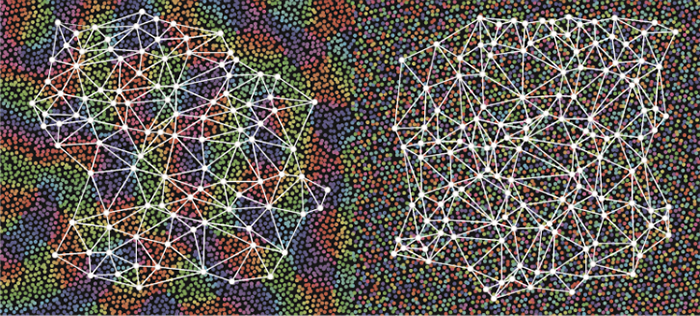A research team led by Professor Se-Bum Paik from the Department of Bio and Brain Engineering and the Program of Brain and Cognitive Engineering at KAIST has explained how disparate organizations in visual cortex develop across diverse mammalian species, a long-standing question in visual neuroscience. This finding will have a significant impact on understanding the origin of functional architectures in the brain, and will provide a broad conceptual advance, as well as advanced insight into the mechanisms underlying neural development in evolutionarily divergent species.
The research team has discovered that distinct cortical organizations across mammalian species are solely predictable by a single biological factor, the retino-cortical mapping ratio. This is the first report that the columnar and salt-and-pepper organization of the visual cortex, observed decades ago, can be successfully predicted and explained. This finding implies that evolutionary variation of physical parameters may induce development of distinct functional circuitry in the brain, even without species-specific developmental mechanism. The study was published on March 10 in Cell Reports.
In the mammalian visual cortex, neural tuning to stimulus orientation is organized in either columnar or salt-and-pepper patterns across different species. For decades, this sharp contrast between cortical organizations has spawned fundamental questions about the origin of functional architectures in visual cortex. However, it was unknown whether these patterns reflected disparate developmental mechanisms across mammalian taxa, or simply originated from variation of biological parameters under a universal development process.
From an analysis of data from eight mammalian species, the research team showed that the retino-cortical feedforward mapping ratio appeared to be correlated to the cortical organization of each species. In the following model simulations, the team found that distinct cortical circuits can arise from different V1 and retinal ganglion cell mosaics sizes. Furthermore, the team showed that the Nyquist sampling theorem explains this parametric division of cortical organization with high accuracy. They showed that a mathematical model predicts that the organization of cortical orientation tuning makes a sharp transition around the Nyquist sampling frequency, explaining why cortical organizations can be observed in either columnar or salt-and-pepper organizations, but not in intermediates between these two stages. This finding suggests that both columnar and salt-and-pepper organization in V1 develop universally with retinal origin, but may bifurcate due to variation of the feedforward circuit.
These findings will be of great interest to a wide range of scientists working in various fields such as neuroscience, vision science, and developmental biology. The research team is trying to propose a unified principle on the origin of functional circuits in the visual cortex, by combining their theoretical model simulations and extensive analysis of currently available data for phylogenetically distinct species. Their results provide unprecedented insight into a universal mechanism of the development of diverse functions in the brain of distinct mammalian species.


Se-Bum Paik Dept. of Bio and Brain Engineering, KAIST
Homepage: http://vs.kaist.ac.kr
E-mail: sbpaik@kaist.ac.kr






